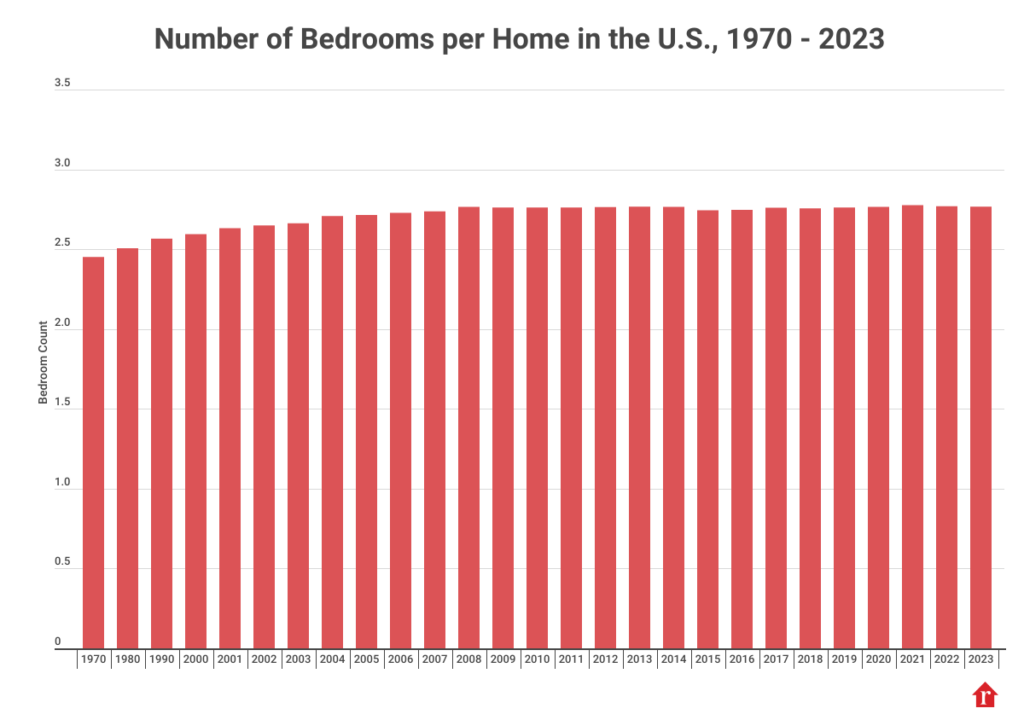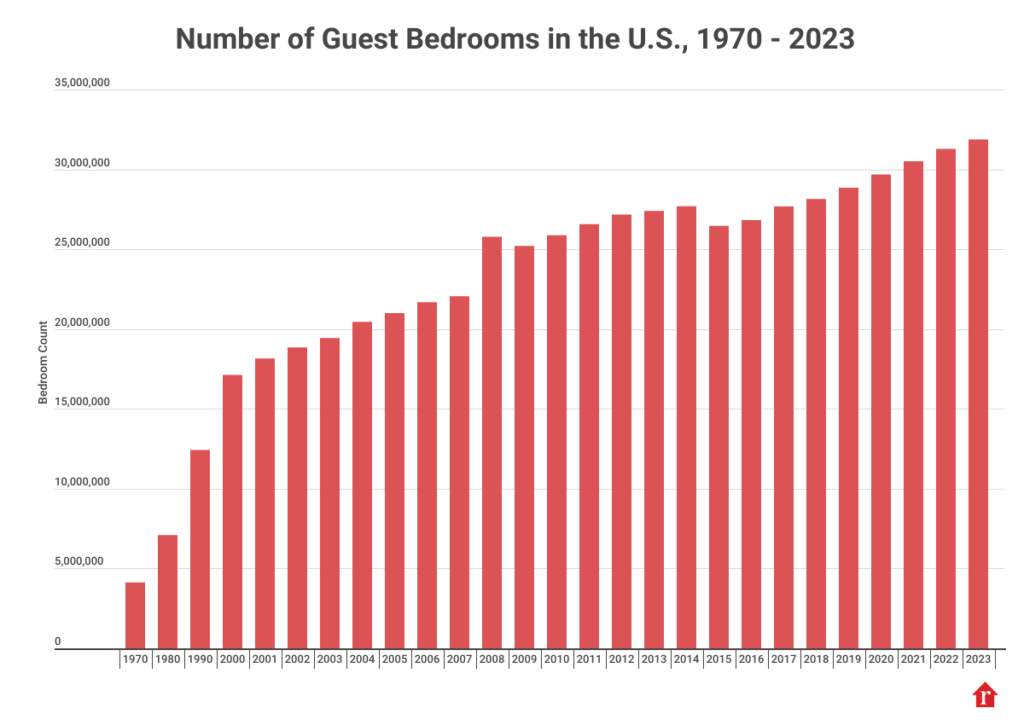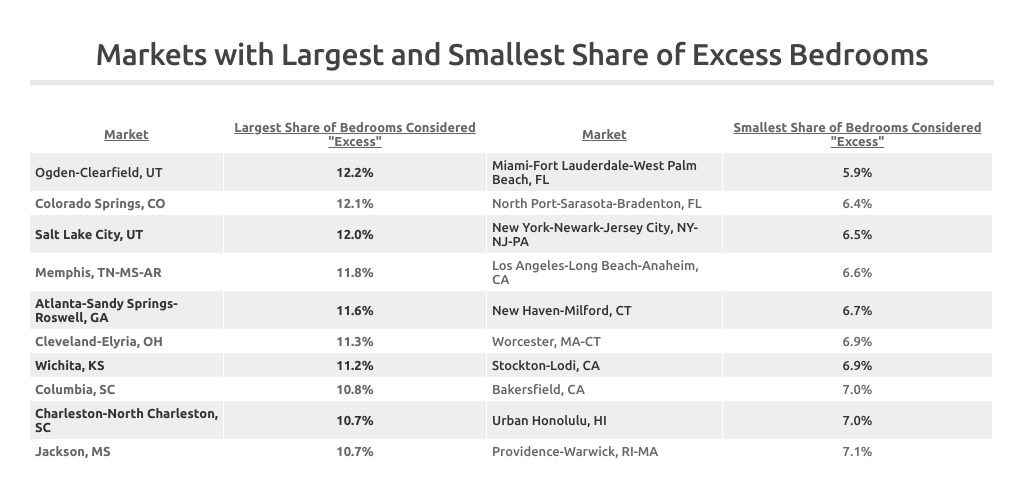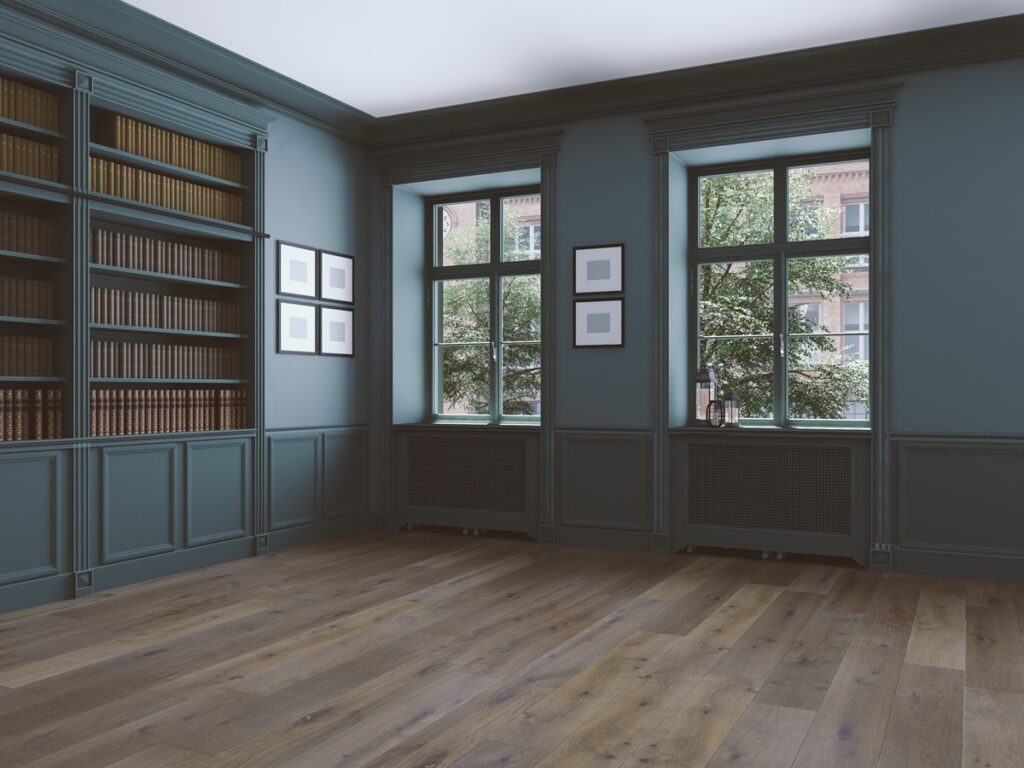The number of extra bedrooms in America has reached the highest levels in Census record history, according to a new report from Realtor.com, which defines an “extra bedroom” as one in excess of the number of people in the home, plus one for an office.
The number of extra bedrooms in the U.S. reached 31.9 million in 2023, up from 31.3 million in 2022. That’s more than four times the seven million extra bedrooms reported back in 1980. Considering that the U.S. housing stock is as large as it has ever been, the report found the share of all bedrooms considered “extra” has reached a record high: 8.8% today, up from last year (8.7%) and over twice 1980 (3.5%). The record-high number and share of excess bedrooms in the nation are driven by both an increase in the number of bedrooms per home and a decline in the number of persons per household.
“During the holidays, we often feel the need for more room, especially for guests; however, we are in a golden age of extra bedrooms,” said Danielle Hale, Chief Economist for Realtor.com. “Since the 1980s, we have seen the average number of bedrooms per home increase, and maybe more importantly, the number of persons per household has declined, creating an environment where we see both the largest number of extra bedrooms and the largest share of extra bedrooms, even with Americans using spare rooms as offices.”

Are Houses Getting Larger?
Not really. There has been no change over the past decade in the average number of bedrooms per home: 2023’s average was 2.8 rooms per home, same as 2013. The average sized home has increased over the past 50 years—in 1970, there was an average of 2.5 rooms per home. The more significant factor is a declining number of residents per household, as the 1970’s high of 3.1 persons has fallen to a record low of 2.5 persons in 2023.
Where Are Extra Bedrooms More Common?
Not surprisingly, extra bedrooms follow the rule of location, location, location. They are most prevalent in the Mountain West and South, where land is plentiful and homes are often built with more square footage and larger floor plans. Homes in densely populated urban areas tend to have fewer extra bedrooms, reflecting the higher demand for space-efficient living and affordability due to the land scarcity and cost.

The top 10 markets with the highest share of total extra bedrooms include:
- Ogden, Utah (12.2%)
- Colorado Springs, Colorado (12.1%)
- Salt Lake City, Utah (12%)
- Memphis, Tennessee (11.8%)
- Atlanta, Georgia (11.6%)
- Cleveland, Ohio (11.3%)
- Wichita, Kansas (11.3%)
- Columbia, South Carolina (10.8%)
- Charleston, South Carolina (10.7%)
- Jackson, Mississippi (10.7%)
The 10 markets reporting the lowest share of total extra bedrooms nationwide include:
- Miami, Florida (5.9%)
- Sarasota, Florida (6.4%)
- New York, New York (6.5%)
- Los Angeles, California (6.6%)
- New Haven, Connecticut (6.7%)
- Worcester, Massachusetts (6.9%)
- Stockton, California (6.9%)
- Bakersfield, California (7%)
- Urban Honolulu, Hawaii (7%)
- Providence, Rhode Island (7.1%)
According the report, there is a loose but noticeable correlation across the 100 largest markets between median home value and share of total extra bedrooms. Intuitively, this makes sense: it is likely easier for households to afford extra bedrooms in cheaper locations rather than more expensive ones. For example, a typical two-person household probably has a better chance of being able to afford a four-bedroom home in Ogden, Utah than in New York City.

Click here for more on Realtor.com’s report on extra bedrooms nationwide.






